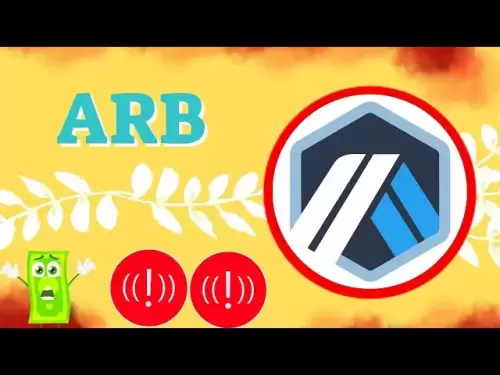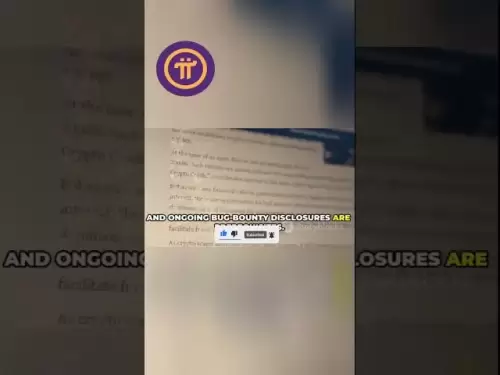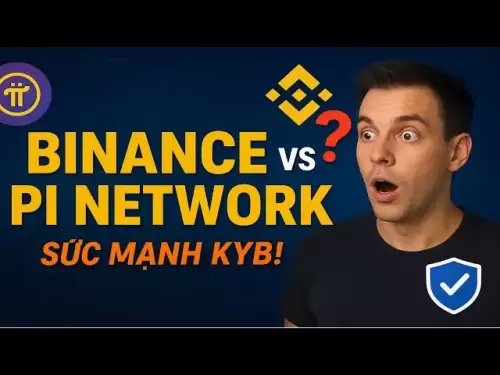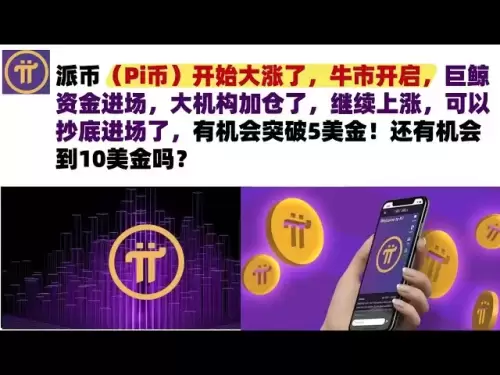-
 Bitcoin
Bitcoin $116400
-0.36% -
 Ethereum
Ethereum $4033
3.40% -
 XRP
XRP $3.302
-1.26% -
 Tether USDt
Tether USDt $1.000
-0.02% -
 BNB
BNB $796.1
1.67% -
 Solana
Solana $177.8
1.89% -
 USDC
USDC $0.9999
0.00% -
 Dogecoin
Dogecoin $0.2314
4.09% -
 TRON
TRON $0.3381
0.14% -
 Cardano
Cardano $0.7989
1.22% -
 Stellar
Stellar $0.4496
-1.84% -
 Chainlink
Chainlink $20.42
9.42% -
 Hyperliquid
Hyperliquid $41.17
0.88% -
 Sui
Sui $3.914
3.77% -
 Bitcoin Cash
Bitcoin Cash $584.7
1.52% -
 Hedera
Hedera $0.2632
-0.54% -
 Avalanche
Avalanche $24.09
3.40% -
 Ethena USDe
Ethena USDe $1.001
-0.02% -
 Litecoin
Litecoin $123.2
1.33% -
 Toncoin
Toncoin $3.318
-0.04% -
 UNUS SED LEO
UNUS SED LEO $8.984
-0.05% -
 Shiba Inu
Shiba Inu $0.00001323
2.85% -
 Uniswap
Uniswap $10.90
4.41% -
 Polkadot
Polkadot $3.999
3.34% -
 Dai
Dai $1.000
0.01% -
 Cronos
Cronos $0.1630
9.64% -
 Bitget Token
Bitget Token $4.484
0.82% -
 Monero
Monero $272.4
2.44% -
 Pepe
Pepe $0.00001173
6.03% -
 Aave
Aave $290.8
2.88%
How did other competitors has advantage over ripple and XRP?
Stellar Lumens, with its focus on cross-border payments and decentralized applications, offers a robust platform that competes effectively against Ripple's XRP.
Feb 06, 2025 at 05:25 pm
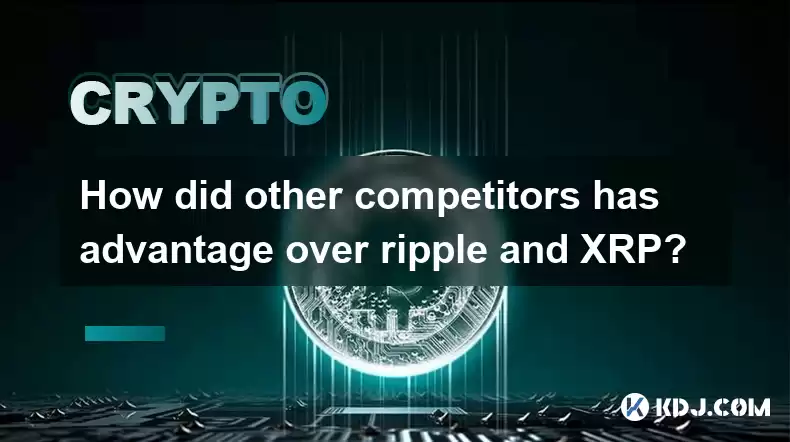
Key Points
- Stellar's focus on cross-border payments and decentralized applications
- Algorand's unique consensus mechanism and security features
- Cardano's strong research and development team and community
- Solana's high transaction speed and scalability
- Binance Coin's utility within the Binance ecosystem
- Polkadot's interoperability and cross-chain capabilities
- Ethereum's established network and developer ecosystem
Competitors' Advantages Over Ripple and XRP
Stellar
- Stellar Lumens (XLM) offers a robust platform for cross-border payments, with a focus on providing affordable, fast, and secure transactions.
- Its decentralized network allows for low transaction fees and high transaction speed, making it ideal for international money transfers.
- Unlike Ripple's focus on large financial institutions, Stellar targets individuals and small businesses, providing them with accessible cross-border payment services.
- Stellar also supports the development of decentralized applications (dApps), expanding its functionality beyond payment processing.
Algorand
- Algorand (ALGO) stands out with its unique Pure Proof-of-Stake consensus mechanism, offering fast and secure transaction processing.
- Its security features, including Byzantine Fault Tolerance (BFT) and verifiable random functions (VRFs), provide enhanced protection against malicious attacks and fraud.
- Algorand's focus on scalability and interoperability makes it suitable for a wide range of use cases, including decentralized finance (DeFi) and smart contract applications.
Cardano
- Cardano (ADA) is renowned for its strong research and development team, led by Charles Hoskinson, a co-founder of Ethereum.
- Its proof-of-stake Ouroboros protocol ensures secure and energy-efficient transaction validation, aligning with the industry's sustainability goals.
- Cardano has a large and active community, supporting its ongoing development and adoption.
- The Cardano network is designed for scalability and interoperability, facilitating the development of complex smart contract applications.
Solana
- Solana (SOL) has gained prominence due to its exceptionally high transaction speed, capable of processing thousands of transactions per second.
- Its unique proof-of-history consensus mechanism minimizes transaction latency and improves efficiency.
- Solana provides a scalable platform for DeFi applications, enabling the development of decentralized exchanges, lending protocols, and other financial services.
Binance Coin
- Binance Coin (BNB) has become the native utility token of the Binance ecosystem, one of the largest cryptocurrency exchanges globally.
- It serves multiple functions, including trading fee discounts, staking rewards, and payment services within the Binance ecosystem.
- Binance Coin's wide acceptance and utility contribute to its value proposition, driving its adoption as a medium of exchange and store of value.
Polkadot
- Polkadot (DOT) is a multi-chain protocol designed to connect different blockchains and enable interoperability.
- Its Relay Chain serves as the central hub, facilitating communication and data transfer between individual chains, known as parachains.
- Polkadot's unique sharding technology allows for parallel processing of transactions, enhancing overall network scalability.
Ethereum
- Ethereum (ETH) remains the dominant platform for decentralized applications and smart contracts, with a vast developer ecosystem and a strong community.
- Its blockchain technology provides the foundation for various applications, including DeFi, non-fungible tokens (NFTs), and decentralized autonomous organizations (DAOs).
- Ethereum has also introduced proof-of-stake as its consensus mechanism, improving energy efficiency while ensuring transaction security.
FAQs
Q: Why have these competitors gained an advantage over Ripple and XRP?
A: Each competitor has its unique strengths and focus that differentiate it from Ripple and XRP. Factors such as cross-border payments, decentralization, scalability, interoperability, and a strong developer community have contributed to their advantages.
Q: How is Stellar Lumens different from Ripple?
A: Stellar focuses on providing cross-border payments and supporting dApp development, while Ripple primarily targets large-scale enterprise solutions and interbank transactions.
Q: What makes Algorand's Pure Proof-of-Stake consensus mechanism unique?
A: Algorand's Pure Proof-of-Stake ensures fast transaction processing, enhanced security through BFT and VRFs, and supports scalability for a growing network.
Q: Why has Cardano gained popularity?
A: Cardano is known for its strong research and development team, its focus on scalability and interoperability, and its active and supportive community.
Q: What is the key advantage of Solana over other blockchain platforms?
A: Solana's high transaction speed and low latency, powered by its proof-of-history consensus mechanism, make it ideal for applications requiring fast and scalable transactions.
Q: How does Binance Coin's utility within the Binance ecosystem contribute to its value?
A: Binance Coin's use in trading fee discounts, staking rewards, and payment services within the Binance ecosystem increases its demand and utility, supporting its value proposition.
Q: What is Polkadot's role in connecting different blockchains?
A: Polkadot's Relay Chain enables interoperability by connecting different blockchain networks, known as parachains, facilitating data transfer and shared security.
Disclaimer:info@kdj.com
The information provided is not trading advice. kdj.com does not assume any responsibility for any investments made based on the information provided in this article. Cryptocurrencies are highly volatile and it is highly recommended that you invest with caution after thorough research!
If you believe that the content used on this website infringes your copyright, please contact us immediately (info@kdj.com) and we will delete it promptly.
- Shiba Inu (SHIB) in the Crypto Landscape: Community, Trends, and Future Outlook
- 2025-08-09 20:30:12
- Solana, Unilabs, and Social Trends: Decoding the Crypto Buzz
- 2025-08-09 21:10:12
- Dogecoin, Meme Coins, and Layer Brett: Chasing the Next 100x
- 2025-08-09 20:50:12
- Crypto Presales in 2025: Are They Set to Outperform Launches?
- 2025-08-09 20:55:15
- Solana, Cardano, and Shiba Inu: Navigating the Crypto Landscape Beyond the Hype
- 2025-08-09 21:15:27
- Lasers in Modern Warfare: Iron Beam and the Future of Defense
- 2025-08-09 20:30:12
Related knowledge

What is Ethereum’s Slashing mechanism and how to punish malicious behavior?
Feb 20,2025 at 03:08am
Key PointsOverview of slashingDifferent types of slashing in EthereumIncentives and consequences of slashingIdentifying and reporting slashed validato...

What is the verifier node of Ethereum and how to become a verifier?
Feb 19,2025 at 06:00pm
The Verifier Node of Ethereum: A Comprehensive GuideKey Points:What is a Verifier Node?How to Become a Verifier NodeResponsibilities and Rewards of a ...

What is Ethereum’s staking, and how to participate and earn money?
Feb 19,2025 at 04:37pm
Key Points:Understanding Ethereum's Staking MechanismSteps to Participate in StakingBenefits and Rewards of StakingSecurity and Risk ConsiderationsTec...

What is Ethereum’s DAO (Decentralized Autonomous Organization) and how does it work?
Feb 20,2025 at 03:12am
Key PointsDefinition and Structure of a DAOGovernance and Decision-Making in DAOsBenefits and Use Cases of DAOsChallenges and Limitations of DAOsWhat ...

What is Ethereum's multi-signature wallet and how to improve security?
Feb 20,2025 at 02:18pm
Key Points:Understanding the Concept of a Multi-Signature WalletBenefits and Drawbacks of Multisig WalletsRequirements for Setting Up a Multisig Walle...

What is Ethereum's oracle and how to provide data for smart contracts?
Feb 21,2025 at 01:30am
Key Points:Understanding the concept of oracles in EthereumExploring different types of oraclesDetailed guide on how to provide data for smart contrac...

What is Ethereum’s Slashing mechanism and how to punish malicious behavior?
Feb 20,2025 at 03:08am
Key PointsOverview of slashingDifferent types of slashing in EthereumIncentives and consequences of slashingIdentifying and reporting slashed validato...

What is the verifier node of Ethereum and how to become a verifier?
Feb 19,2025 at 06:00pm
The Verifier Node of Ethereum: A Comprehensive GuideKey Points:What is a Verifier Node?How to Become a Verifier NodeResponsibilities and Rewards of a ...

What is Ethereum’s staking, and how to participate and earn money?
Feb 19,2025 at 04:37pm
Key Points:Understanding Ethereum's Staking MechanismSteps to Participate in StakingBenefits and Rewards of StakingSecurity and Risk ConsiderationsTec...

What is Ethereum’s DAO (Decentralized Autonomous Organization) and how does it work?
Feb 20,2025 at 03:12am
Key PointsDefinition and Structure of a DAOGovernance and Decision-Making in DAOsBenefits and Use Cases of DAOsChallenges and Limitations of DAOsWhat ...

What is Ethereum's multi-signature wallet and how to improve security?
Feb 20,2025 at 02:18pm
Key Points:Understanding the Concept of a Multi-Signature WalletBenefits and Drawbacks of Multisig WalletsRequirements for Setting Up a Multisig Walle...

What is Ethereum's oracle and how to provide data for smart contracts?
Feb 21,2025 at 01:30am
Key Points:Understanding the concept of oracles in EthereumExploring different types of oraclesDetailed guide on how to provide data for smart contrac...
See all articles





















